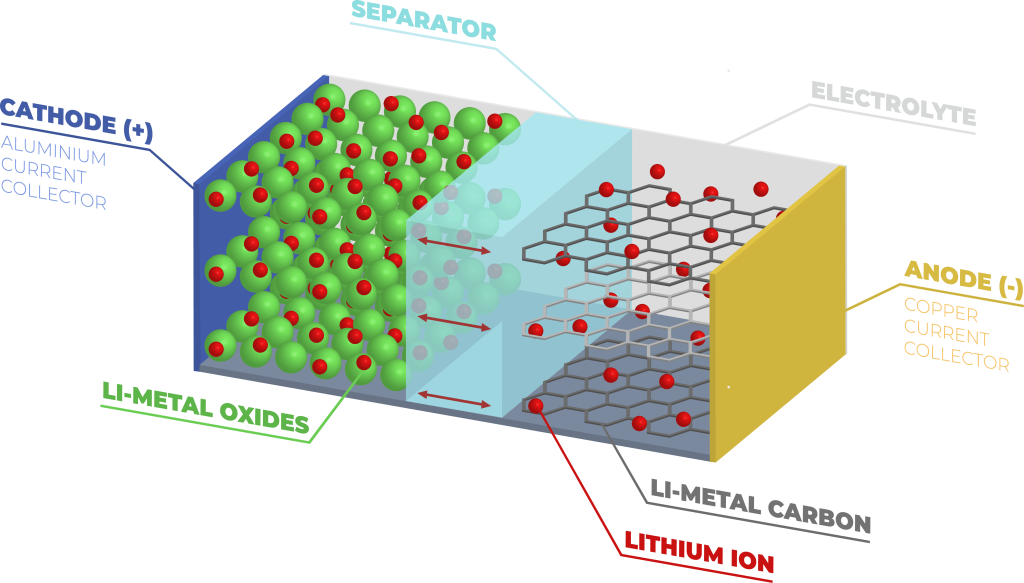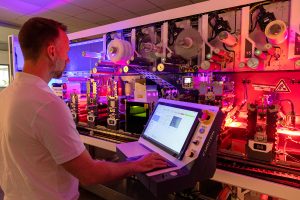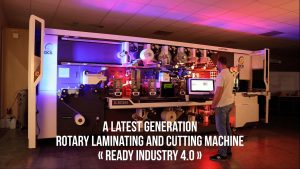The evolution of batteries plays a crucial role in shaping our energy future, particularly in the field of industrial machinery. At DOREY Converting Systems, we strive to stay at the forefront of this revolution by fully understanding the differences between solid and liquid batteries, two technologies that promise to transform how we store and use energy.
Liquid batteries, which are currently the norm, use a liquid electrolyte to facilitate the movement of lithium ions between the anode and cathode. They are widely appreciated for their high conductivity and flexibility in terms of design. However, these batteries have major drawbacks, including risks of leakage and overheating, thereby limiting their long-term safety and durability.
LIQUID BATTERY

On the other hand, solid batteries replace the liquid electrolyte with a solid material, such as ceramic or polymer. This innovation offers higher energy density, increased durability, and improved safety by eliminating the risks associated with flammable liquids. These advantages make solid batteries a promising option for a variety of applications, from electric vehicles to portable electronic devices.
SOLID STATE BATTERY

Here is a summary of the advantages and disadvantages of liquid batteries compared to solid batteries. It is essential to keep in mind that these characteristics may vary depending on the specific design of the battery, the materials used, and the intended applications.
| Liquid Batteries | Solid State Batteries | |
| Advantages | High electrolyte conductivity | Higher energy density |
| Design flexibility | Increased durability | |
| Enhanced safety (reduced leakage risk) | ||
| Disadvantages | Leakage and overheating risks | Less design flexibility |
| Lower energy density | Sometimes lower electrolyte conductivity | |
| Reduced safety (leakage risk) |
At The Battery Show 2024, DOREY Converting Systems will showcase its rotary cutting technology, designed to meet the manufacturing needs of both solid and liquid battery components.
Our machine is poised to play a central role in this energy transition, offering precision and efficiency for the production of safer and more efficient batteries.
By exploring the structural differences and practical implications of solid and liquid batteries, we are confident that this transition to solid batteries will open up new opportunities in the energy sector. Join us for a live demonstration at booth 8E30 and discover how our machines can help shape the future of energy.



